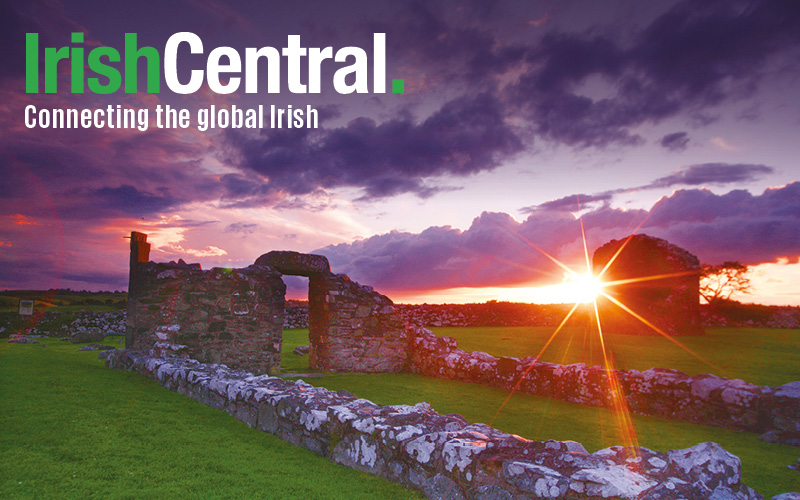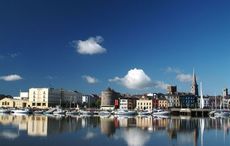Ireland’s gorgeous landscape and mild year-round temperatures make it the perfect location for a hike or stroll. The quiet country roads of Ireland are perfect for casual walkers, while the mountains and forests provide great trails for extreme hikers.
There are many established routes and trails throughout the country. You can take a guided walk through the beautiful Killarney Valley, in Kerry, a looped walk through the woodland trails of the Walled Garden Loop, in County Kilkenny, or a strenuous climb up the Wicklow Mountains.
Ireland also hosts numerous walking festivals. For example, Castlebar in County Mayo hosts its International Four Days’ Walking Festival in July for walking clubs and individuals. The festival is all about walking, talking, rambling, music, and fun.
The Mourne International Walking Festival, based in the pretty seaside town of Warrenpoint, County Down, takes place every June. Walkers gather from all over the world for scenic mountain rambles and ambitious mountain hikes in this picturesque area of the North.
From the mountains and glens to the loughs and canals, there’s a host of outdoor options for ramblers to choose from. Here are your choices:
Looped Walks
Looped walks, or circular walking routes, can go anywhere in Ireland; along the coast, through mountains and across bogs and moorlands.
This type of walk is perfect for the visitor who doesn’t have time for a designated walking holiday, but still wants to stroll and take in the scenery.
There is a wide variety of looped walks including coastal, island, mountain and hill, bog and moorlands, historical and archaeological one-day circuits suitable for both serious and leisurely walkers.
Ranging from 3 miles to 10 miles, these walks focus on areas of outstanding natural beauty and historical significance.
Guided Walks
There are a number of Irish specialist walking operators who can arrange your vacation, if you’d prefer to travel down that route (ha-ha).
As with cycling, going with a guide has lots of perks, particularly as it means you get the benefit of someone else’s expertise as you are walking.
You simply need to get up each day and walk with your knapsack. And if you can’t get out of bed the morning after a famous Irish pub session, you can take a lift to your next night’s accommodation with your luggage.
Climbing
If flat land walking is too boring for you, not to worry; Ireland offers some challenging peaks and hills for you to climb.
Irish mountains may be a bit low compared to many of the world’s towering peaks, but some still present a hardcore challenge.
Note: Some climbing experience or a guide is necessary as marked trails are few and far between, and when the mist and fog swirls in, navigation can get seriously tough.
And to the experienced climber, the rough terrain and the unpredictable weather all combine to make the perfect climb.
Fast Facts
Pay attention – you’ll need to know this stuff before you set out on your hike!
Climate
Ireland might have a reputation for Rain, Rain, Rain, but in fact the country’s year-round mild climate makes it an ideal spot for walking. Prevailing southwesterly winds mean that winters are mild and summers are the perfect temperature.
Maps
Check out the Discovery Series of maps at 1:50,000 scale, available from your local tourist office or at the Ordnance Survey http://www.osi.ie/ websites. Maps are also available at a scale 1:250,000 in four sheets to cover the whole of Ireland and are great for walkers as they show most roads.
The Countryside
If you’re off on a trek through the Irish countryside, then make sure to show courtesy and consideration to everyone.
Much of the land is in private hands and access is only available with the owner's goodwill.
While most landowners don’t object to recreational users on their land, some do. So always comply with a landowner's wishes, always shut gates after you have opened them and observe the Countryside Code.
What You Need For Walking:
- Strong walking boots with ankle and Achilles support
- Thick socks, plus spares
- Warm pants, sweaters and spares
- Waterproof (ideally breathable) and windproof coat/jacket and waterproof over-trousers
- Gloves and hat (for non-summer walking)
- Shorts, sun hat and sunglasses (for sunny days)
- First aid kit (plasters/band-aid, aspirins, etc.), insect repellent and sunscreen
- Backpack to carry food and extra clothing (a plastic liner is useful)
- Water bottle and thermos flask, sandwich box, map case
- Walking poles, if you know how to use them
- Sitting mat, for lunch stops
What You Need For Climbing:
- Map and compass, (and make sure you know how to use them)
- Whistle and torch
- Spare clothing
- Spare food
- Survival equipment, like a tent, in case you have to spend the night.




Comments